The Peace Lily (Spathiphyllum spp.) is one of the most popular and beloved indoor houseplants around the world. Famous for its striking green foliage, graceful white blooms, and ability to purify indoor air, the Peace Lily is often recommended to beginner and experienced plant enthusiasts alike. Despite its reputation as a hardy, low-maintenance plant, one question frequently arises among plant owners:
How often should you water a Peace Lily?
In this comprehensive guide, we’ll explore the ideal watering schedule for Peace Lilies, factors that influence their watering needs, signs of overwatering and underwatering, proper watering techniques, and tips for keeping your plant vibrant and healthy.
Introduction to the Peace Lily
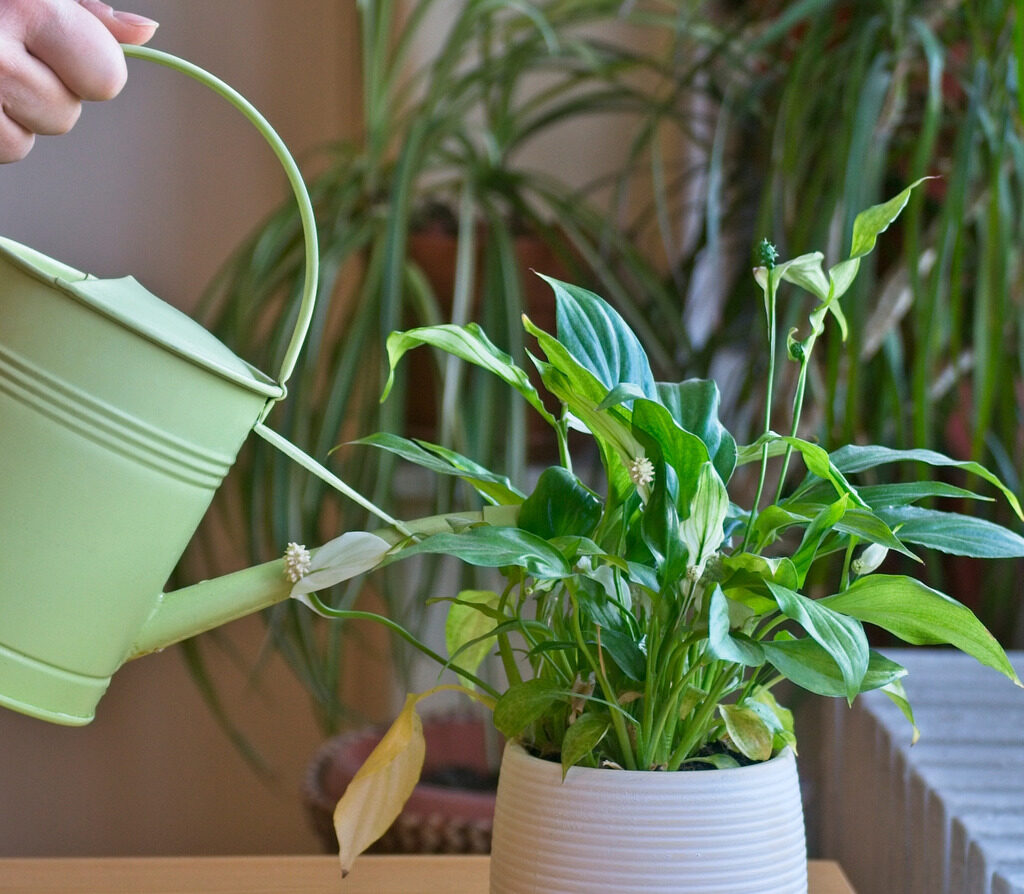
The Peace Lily, native to the tropical rainforests of Central and South America, thrives in warm, humid, and shaded environments in the wild. It has adapted well to indoor settings but still requires a balance of water and care to flourish.
Unlike desert-dwelling succulents, Peace Lilies enjoy consistent moisture but dislike soggy or waterlogged soil. Striking the right balance is essential for their overall health and longevity.
How Often Should You Water a Peace Lily?
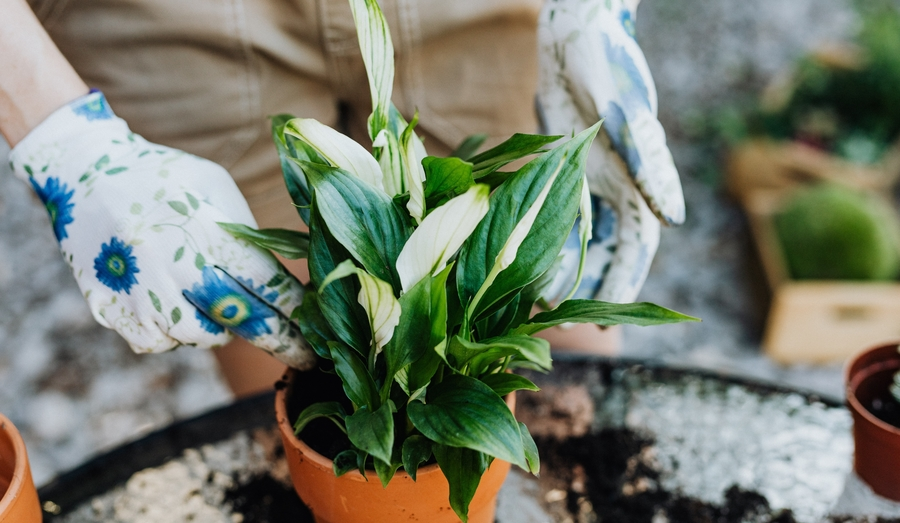
In general, you should water a Peace Lily about once a week. However, this frequency can vary depending on several factors such as season, temperature, humidity, pot size, and light exposure.
General Watering Rule:
- Spring & Summer (active growing season): Every 5–7 days
- Fall & Winter (dormant period): Every 7–10 days
Before watering, it’s crucial to check the soil’s moisture level. If the top 1–2 inches of soil feel dry to the touch, it’s time to water.
Factors That Affect Peace Lily Watering Frequency
To provide optimal care, consider these variables when determining how often to water your Peace Lily:
Season and Temperature
- Warmer months (spring and summer): Water more frequently as the plant actively grows and soil dries faster.
- Cooler months (fall and winter): Reduce watering since the plant’s growth slows, and soil retains moisture longer.
Indoor Climate and Humidity
Peace Lilies thrive in 50-70% humidity. Dry, air-conditioned, or heated indoor environments cause soil to dry faster, requiring more frequent watering. Conversely, higher humidity slows evaporation.
Pot Size and Material
- Small pots dry out quicker than larger ones.
- Clay or terracotta pots allow moisture to evaporate through the sides, requiring more frequent watering than plastic or glazed ceramic pots.
Light Exposure
Peace Lilies prefer bright, indirect light. Direct sunlight increases evaporation and may require increased watering frequency, while lower light conditions slow water loss.
Soil Type
Peace Lilies prefer well-draining, peat-based potting mixes. Dense or compacted soil retains water longer and may lead to overwatering if not monitored carefully.
Signs Your Peace Lily Needs Watering
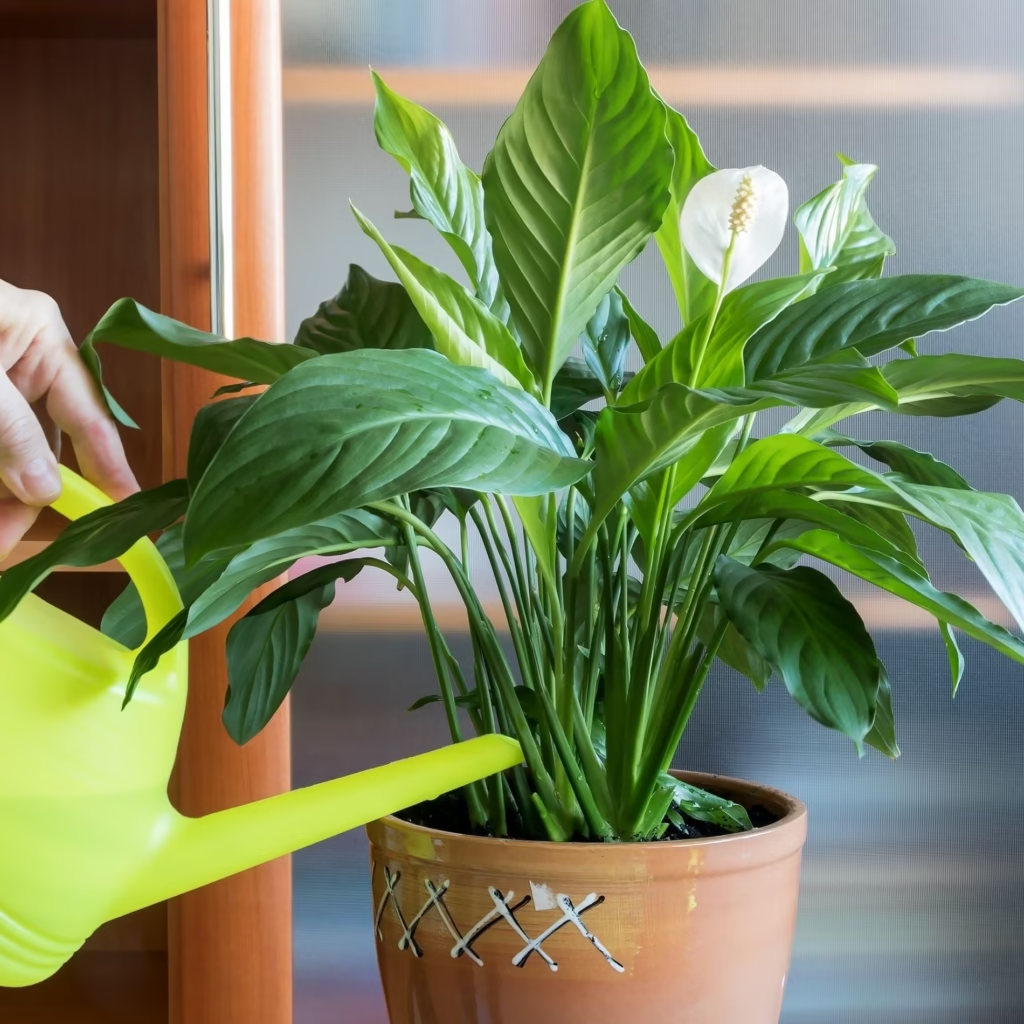
One of the most charming traits of the Peace Lily is its ability to signal when it needs water. Look out for these indicators:
Drooping or Wilting Leaves
When a Peace Lily gets thirsty, its leaves begin to droop noticeably. This is a natural defense mechanism. Fortunately, they usually perk up quickly once watered.
Dry Soil
Insert your finger about 1–2 inches into the soil. If it feels dry, it’s time to water.
Crisp Leaf Edges
Dry, brown edges indicate dehydration and possibly low humidity levels.
Signs of Overwatering a Peace Lily
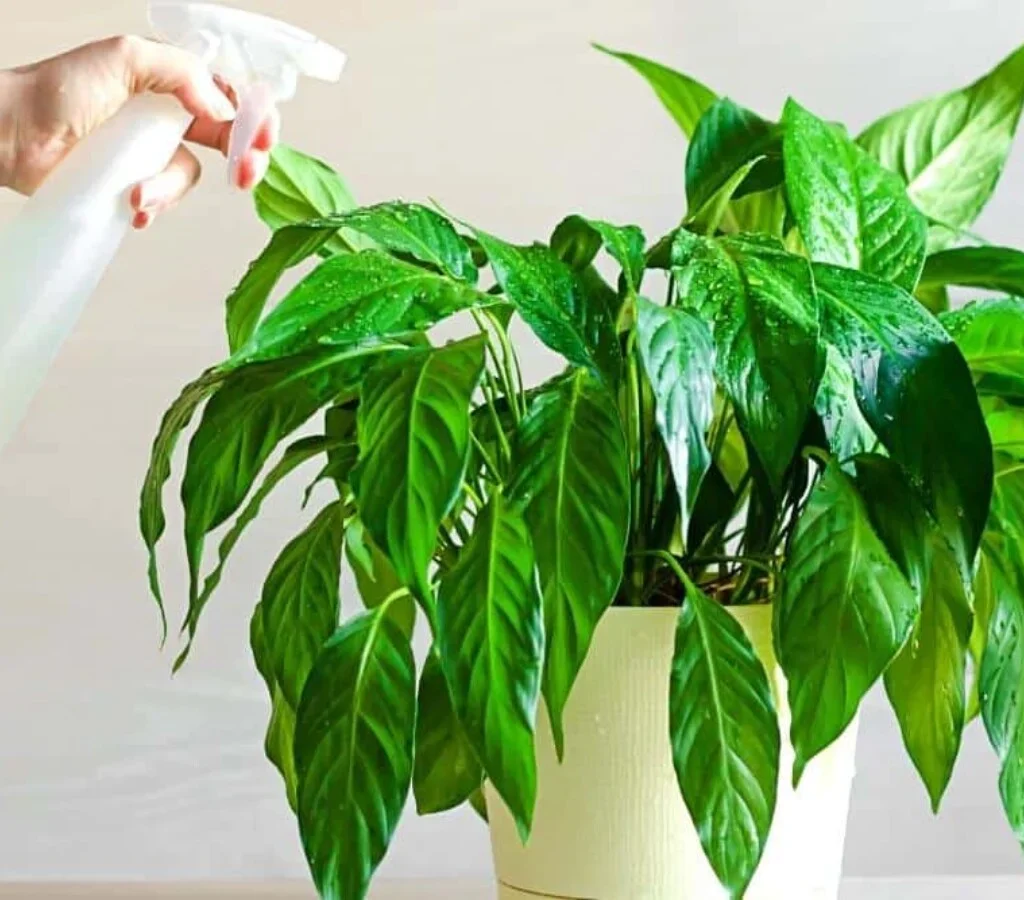
Overwatering is the most common problem with Peace Lilies. Watch for these warning signs:
Yellowing Leaves
Uniform yellowing often signals that the roots are waterlogged.
Soft, Mushy Stems
This can indicate root rot caused by excess moisture.
Foul Smell from Soil
An unpleasant odor is a sign of decaying roots and bacteria buildup.
Mold on Soil Surface
Persistent surface mold indicates chronic overwatering and poor drainage.
How to Properly Water a Peace Lily
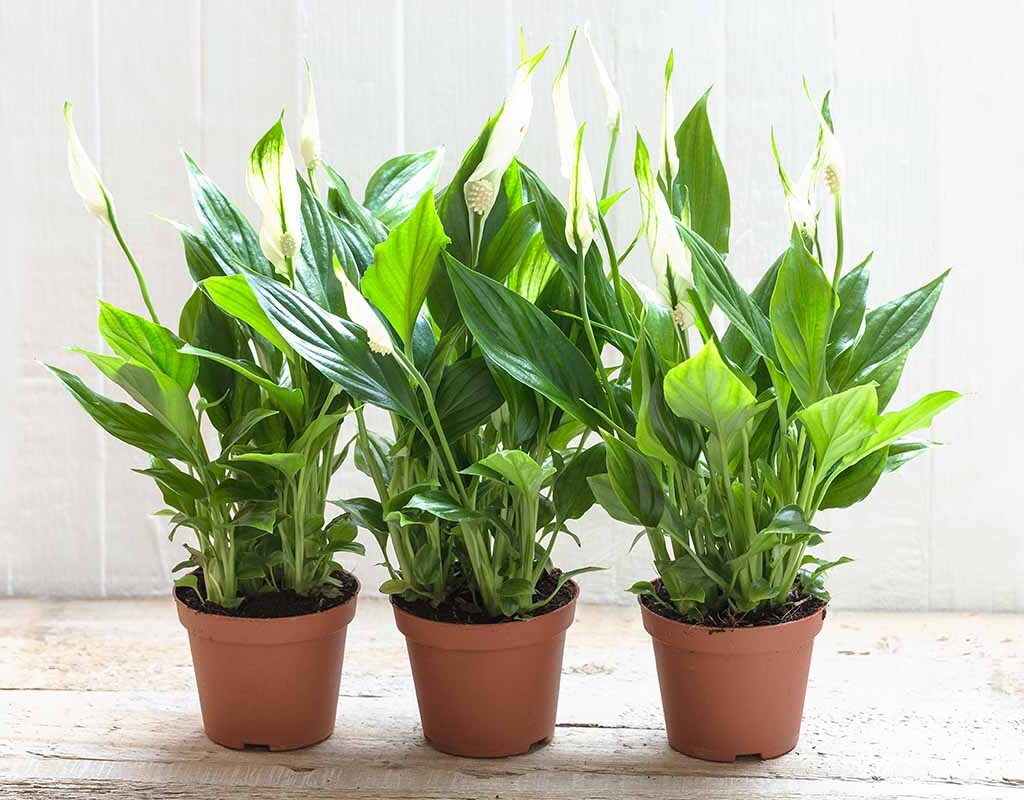
To keep your Peace Lily healthy and thriving, follow these best practices:
Use Room Temperature Water
Avoid shocking the plant’s roots with cold water. Room temperature, preferably filtered or dechlorinated, water works best.
Water Thoroughly but Allow to Drain
- Water the plant slowly until water begins to drain from the bottom.
- Discard excess water from saucers or cache pots to prevent root rot.
Tip: Don’t let the plant sit in standing water.
Check Soil Moisture Regularly
Use your finger or a moisture meter to monitor soil dryness before each watering session.
How to Adjust Watering Based on Seasons
Seasonal adjustments are key for proper Peace Lily care:
| Season | Frequency | Notes |
|---|---|---|
| Spring/Summer | Every 5–7 days | Plant actively grows, higher temperatures dry soil quickly. |
| Fall/Winter | Every 7–10 days | Growth slows, cooler temperatures reduce evaporation. |
Pro Tip: In winter, indoor heaters dry out the air — consider increasing humidity rather than watering too frequently.
Best Type of Water for Peace Lilies
Peace Lilies are sensitive to chemicals like fluoride and chlorine commonly found in tap water. These can cause brown leaf tips.
Ideal Water Choices:
- Distilled water
- Filtered water
- Rainwater
- Tap water left to stand for 24 hours
Additional Peace Lily Care Tips
Watering is just one aspect of Peace Lily care. Here’s how to keep your plant thriving:
- Light: Provide bright, indirect sunlight.
- Soil: Use a peat-based, well-draining potting mix.
- Humidity: Maintain 50-70% humidity.
- Fertilizing: Feed with a balanced, water-soluble fertilizer every 6–8 weeks during growing season.
- Pruning: Trim yellow, brown, or wilted leaves promptly.
Why Peace Lilies Wilt When Thirsty
Peace Lilies are naturally programmed to wilt when they lack water. This temporary wilting helps reduce surface area for water loss through transpiration, conserving internal moisture.
The beauty of this characteristic is its reversibility. A drooping Peace Lily can bounce back to full health within hours of watering.
Conclusion
How often should you water a Peace Lily? The simple answer is about once a week. However, understanding the variables — like temperature, humidity, light exposure, pot size, and soil type — is essential to tailor a care routine for your specific environment.
Regularly check soil moisture, observe your plant’s leaves for thirst or stress signals, and remember that consistent, moderate watering paired with high humidity is the secret to a thriving, beautiful Peace Lily.
By following these guidelines and seasonal adjustments, you’ll enjoy the lush greenery and graceful white blooms of your Peace Lily for years to come — a rewarding companion for homes, offices, and indoor gardens.

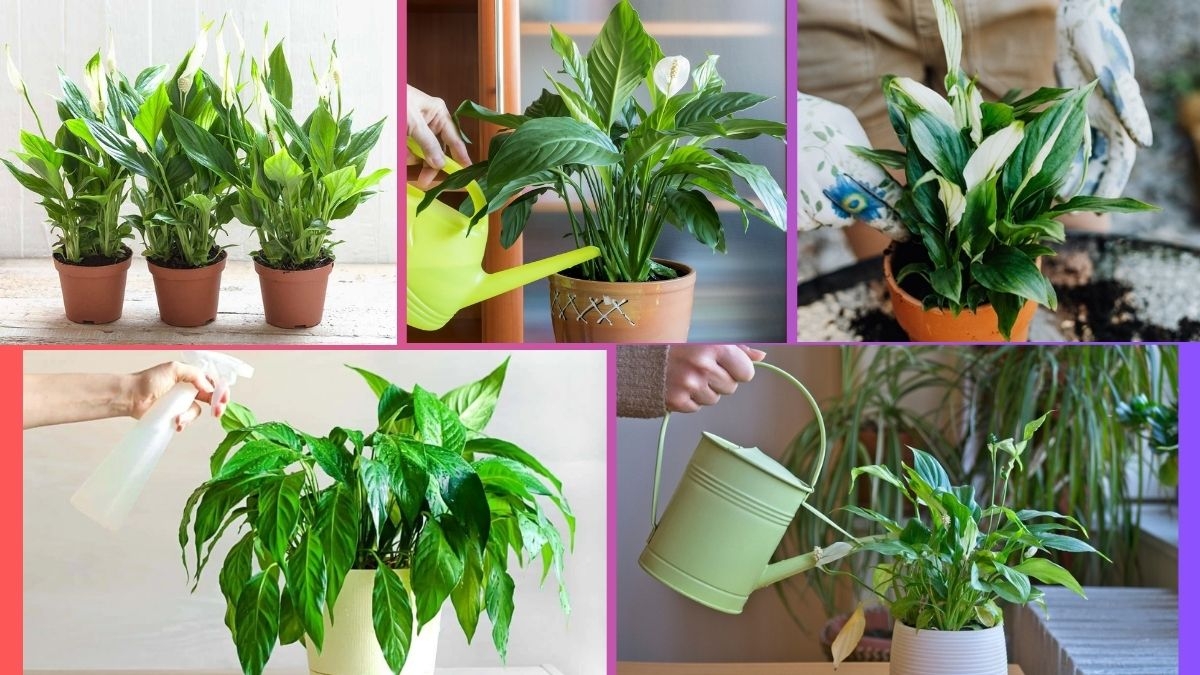



Leave A Comment